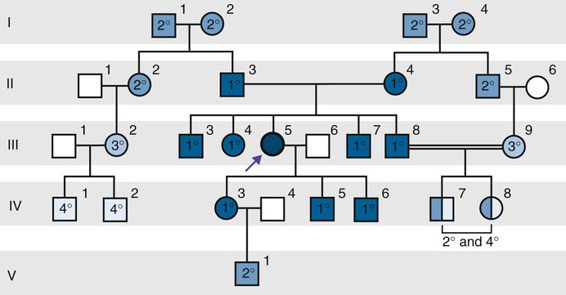
Figure 7-3 Relationships within a kindred. The proband, III-5 (arrow), represents an isolated case of a genetic disorder. She has four siblings, III-3, III-4, III-7, and III-8. Her partner/spouse is III-6, and they have three children (their F1 progeny). The proband has nine first-degree relatives (her parents, siblings, and offspring), nine second-degree relatives (grandparents, uncles and aunts, nieces and nephews, and grandchildren), two third-degree relatives (first cousins), and four fourth-degree relatives (first cousins once removed). IV-3, IV-5, and IV-6 are second cousins of IV-1 and IV-2. IV-7 and IV-8, whose parents are consanguineous, are doubly related to the proband: second-degree relatives through their father and fourth-degree relatives through their mother.

Stay updated, free articles. Join our Telegram channel

Full access? Get Clinical Tree


